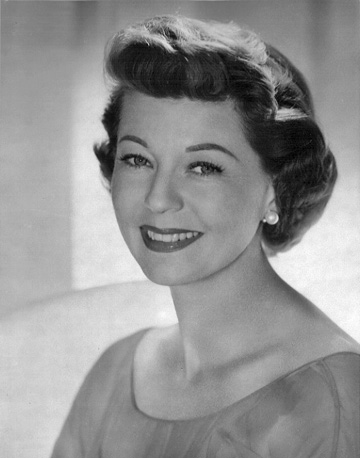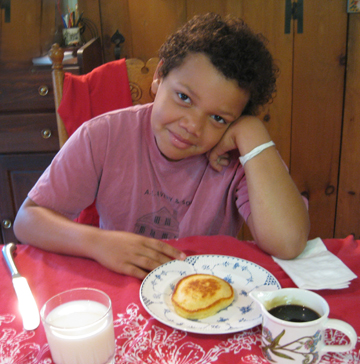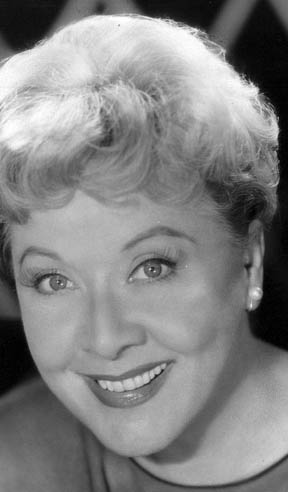
Vivian Vance (Kansas Historical Society)
The woman fellow character actress Mary Wickes called “the best second banana in the business” would have turned 100 on Sunday, July 26. Vivian Vance was born Vivian Roberta Jones in 1909 in Cherryvale, Kansas.
According to biographers Frank Castelluccio and Alvin Walker, it always bothered Vance that she was inextricably linked in the public mind with frumpy landlady Ethel Mertz in the situation comedy I Love Lucy.
They quote her as saying, “When I die, there will be people who send Ethel flowers. I’ll get to heaven and someone will say, ‘Hi, Ethel! I see you are still in re-runs!’”
They also chronicle her ambivalent relationship with Lucy star Lucille Ball. Ball was at once Vance’s closest friend and a source of resentment. Playing second fiddle doesn’t sit easily on the ego. Never a complete professional success before or after her collaborations with Ball, Vance understandably longed to be a star on her own. She wanted to be free of Lucy and free of Ethel.
If Vance could look back on her career today, however (she died in 1979), history might show her the value of her work. I Love Lucy paved the way for almost all television comedies that followed it, both in terms of technique and in terms of narrative.
It also gave viewers an eternal model of supportive friendship. Lucy and Ethel were the forerunners of many TV gal pals to come, including the eponymous heroines of Laverne & Shirley, all of Charlie’s Angels, and Cybill and Maryann of Cybill.
When my friend Teri Tynes and I used to drop in on each other across the courtyard of our Austin, Texas, apartment complex, the Casa del Rio, we liked to refer to ourselves as Mary and Rhoda (in homage to the Mary Tyler Moore Show). We could just as easily have called ourselves Lucy and Ethel. Their relationship epitomized the comfort, companionship, and adventurous spirit we felt with each other and sensed in these television comrades.
One of Vivian Vance’s frustrations was that she was often called upon to react in I Love Lucy rather than to act. It was Ethel’s grimacing face that told us that Lucy was about to do something outrageous, Ethel’s careful listening that gave Lucy a chance to expound on her latest scheme.
Reaction is a large part of friendship—and a large part of great acting. So on this anniversary of Vivian Vance’s birth let’s give second bananas everywhere their due. By the time the banana bread comes out of the oven no one can tell where the first banana left off and the second banana took over. (I can’t figure out what to do with the third banana in this metaphor. William Frawley, anyone?)
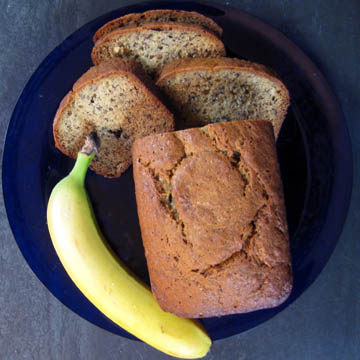
Second Banana Bread
This recipe comes from another Lucy/Ethel Mary/Rhoda friend, my graduate-school housemate Sara Stone. Sara is probably the most generous person I know. In the last year of my doctoral program I was convinced I had only a couple of weeks to go on my dissertation. Sara invited me to stay with her until it was finished. It took NINE MONTHS! Sara never complained; she just gave me unconditional support and shelter (not to mention grocery money). And she can cook, too! We all need friends like Sara.
Of course, I’m still not entirely sure which of us was Lucy and which Ethel.
Ingredients:
1 cup sugar
1 cup ripe mashed bananas (about 3 bananas)
3/4 teaspoon baking soda
1/2 teaspoon salt
2 cups flour
1 cup chopped pecans (optional)
Instructions:
Grease a standard loaf pan. Preheat the oven to 325 degrees.
In a bowl, cream together the butter and sugar. Stir in the bananas, and then beat in the eggs. Beat in the baking soda and salt; then gently stir the flour into the butter mixture. Add the pecans if desired.
Bake until a toothpick inserted into the center of the loaf comes out dry. (Sara likes her bread a bit mushier than this, but my family likes it firm.) In my oven I tend to bake it for an hour, then turn off the oven and leave it for another 15 minutes or so—but by all means test your bread and YOUR oven.
Cool the loaf on a rack for 20 minutes; then release it onto the rack to finish cooling.
Makes 1 loaf.
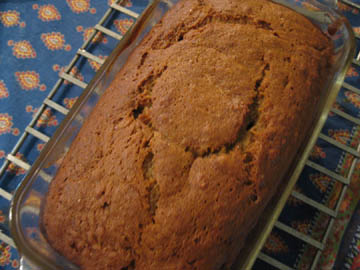
If you enjoyed this post, please consider taking out a free email subscription to my blog. It features easy but tasty country recipes with occasional musings on history, popular culture, and family life. Just click on the link below!
Subscribe to In Our Grandmothers’ Kitchens by Email.
